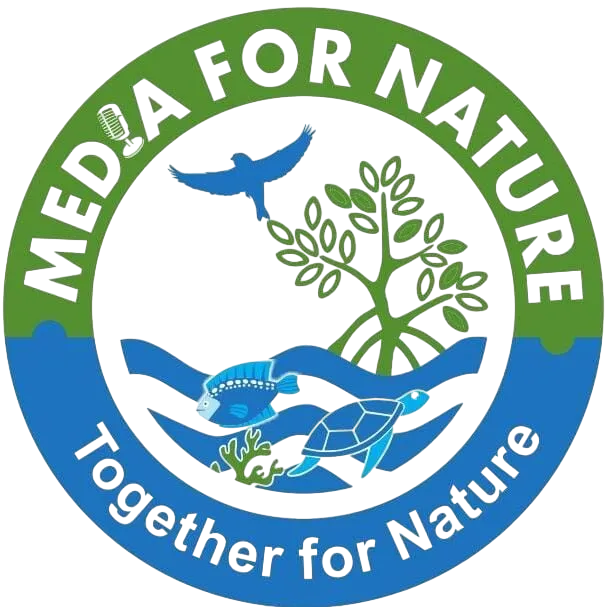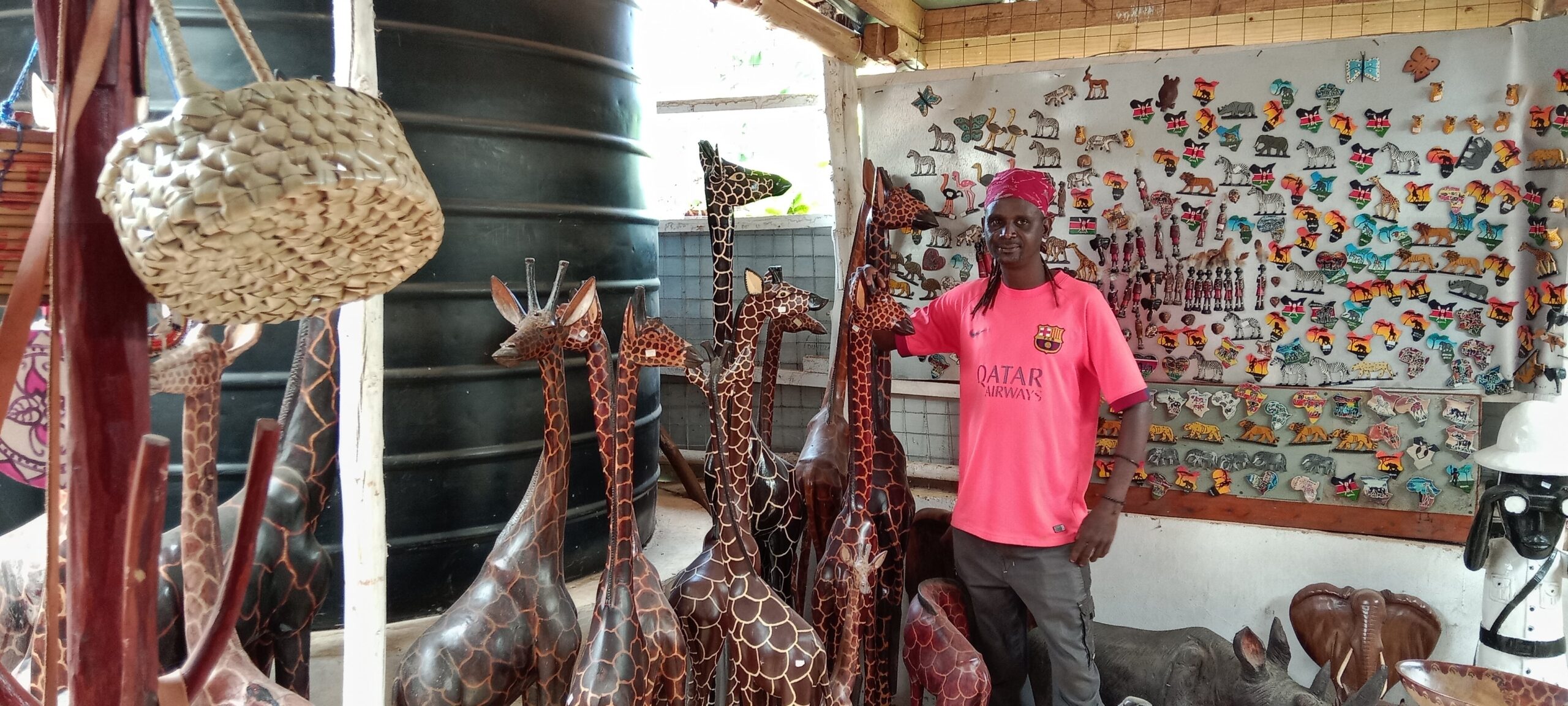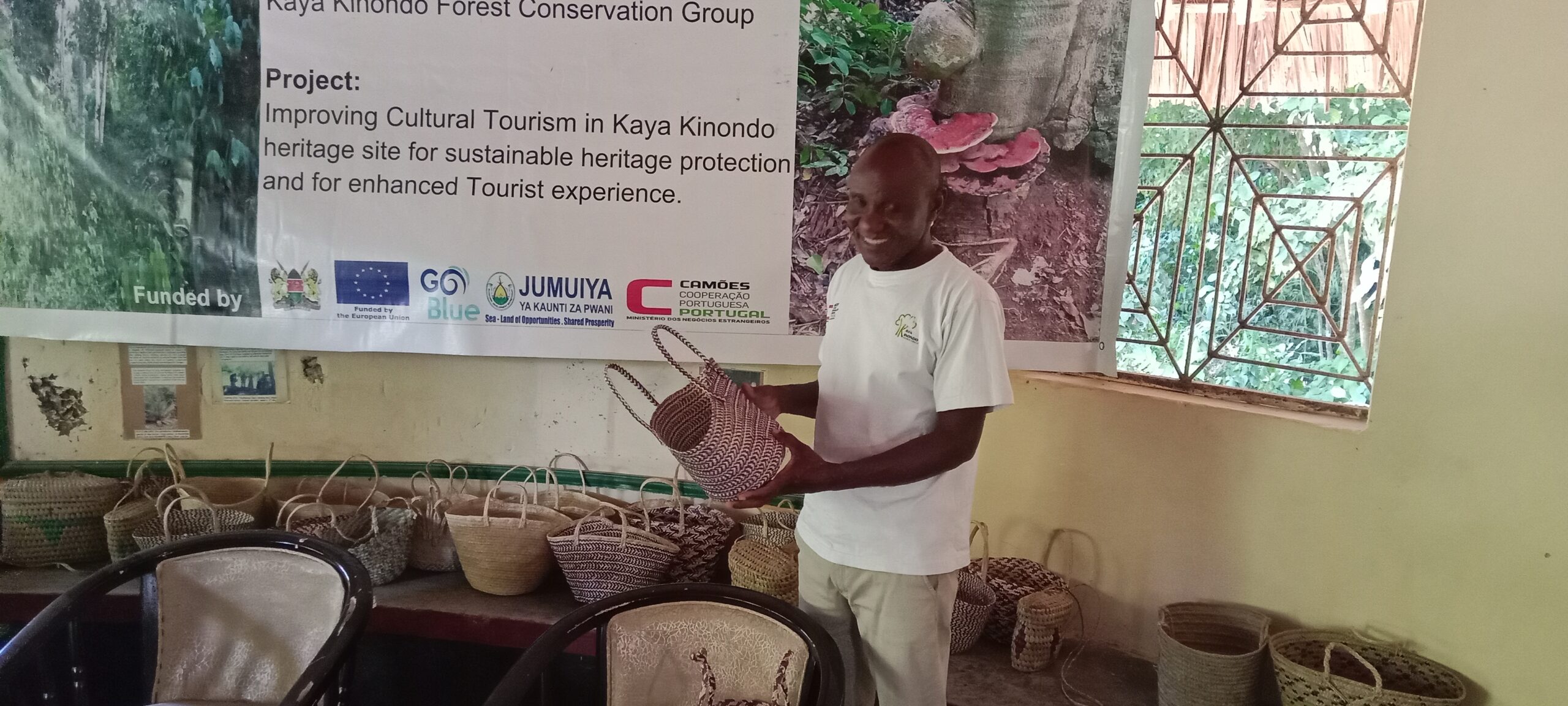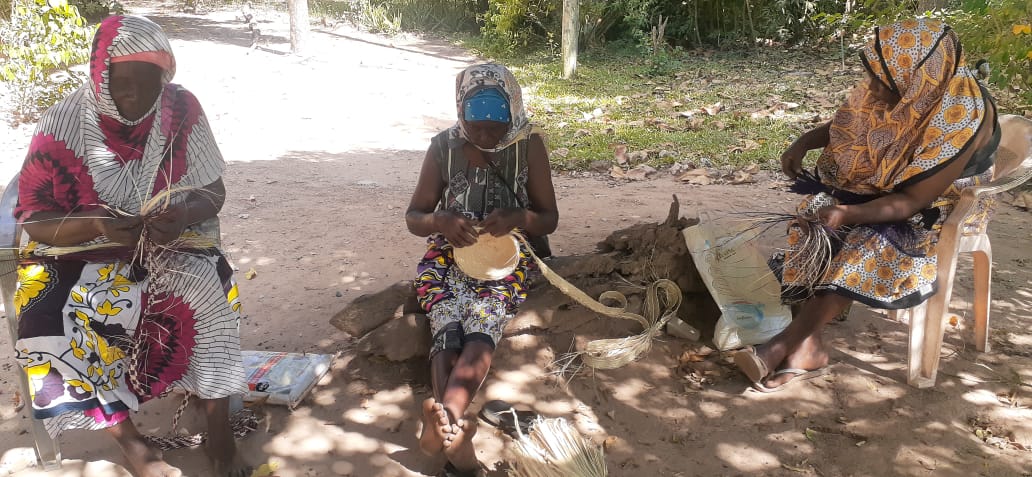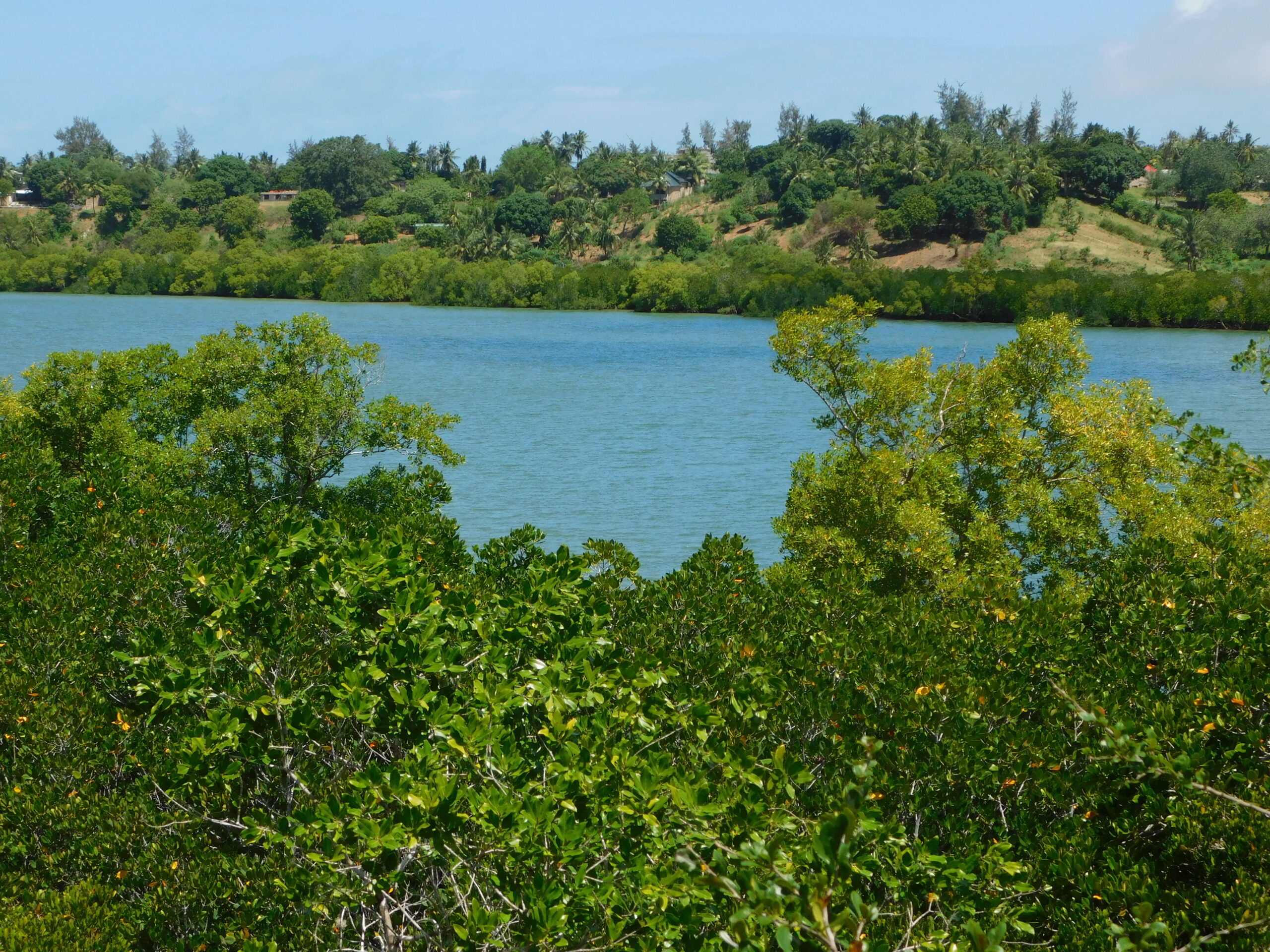Some of the carvings in the expanded showroom at the Millennium Handcraft Cooperative. The expansion was done with funding from Camões
What started as a simple pastime to make his son a wooden toy car, has now shaped Julius Musyoka into an accomplished designer and sculptor of great repute in Kenya.
Musyoka stumbled into this trade out of frustration from buying new toy cars for his son that would not last. From a single wooden toy car, it grew into a thriving business making toy cars for children.
“I started with five and hawking them but it soon blossomed and moved from selling in the streets to exhibitions and my first fair was at the Nyali Baptist church and out of the 33 pieces I was able to sell 22 at Ksh1,000 each and no one complained about the price.
“I was posting the toys on social media but to me it was just a hobby until a friend of mine working in an art shop called me to ask about how I could supply them with my toys and that too became a good market for my products,” said Musyoka.
This was to be his source of livelihood during the Covid-19 pandemic lockdown while working at home.
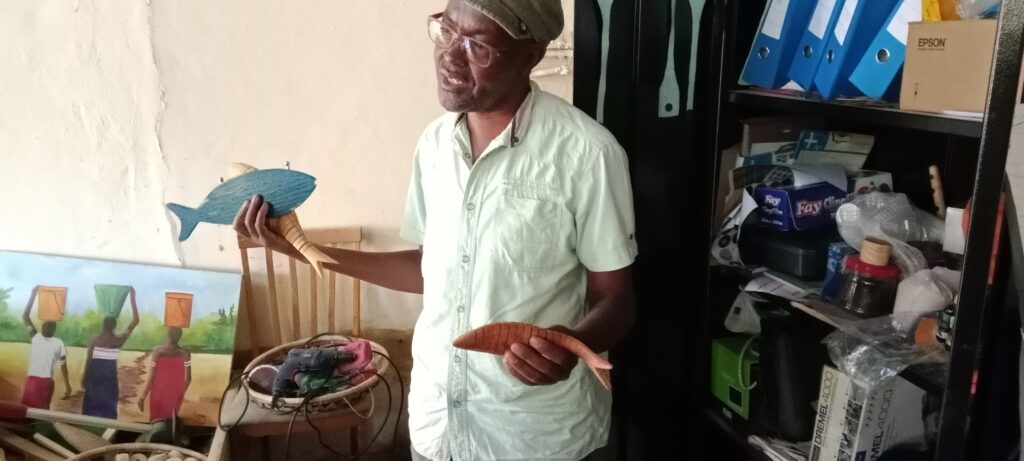
Julius Musyoka, an industrial designer displaying the products he developed at his workshop in Mombasa. He was a beneficiary of the Go Blue project funded by Camões/Photo by Mazera Ndurya
“It was during that time when someone whom I still don’t know up to now shared a link which was a call for applications for the Go Blue grants. I applied and went through all the stages and got approved.
“We signed the grant digitally. A team from Camões, the Portuguese Development Agency came to visit alongside those from the Sustainable Tour and Travel Africa (STTA). They came to the house and I told them that was where I was operating from. I displayed all the toys on the sofa set and they were convinced,” he explained.
Community art
He said the whole idea that impressed the Camões, team was how one can use community art to develop unique handcraft as tourism products that can represent Mombasa.
“My project aim is to develop unique crafts as tourism products, the things that people buy when they come to Mombasa which are inspired by the culture of the people of Mombasa and the coast region.
“We made a promise to develop 20 products so when the funds came we had to hit the road running because of the time factor. We had to start with the key ones that we could put to the market first and we chose toy cars because we already had a market for it,” he said.
Musyoka said they had to find what is cultural in terms of artistic presentation and developed a form to use to get information about it. Some of the things that people mentioned include baskets and khanga (wrapper) and they chose two communities – the Pokomo because of their unique weaving and colour combinations.
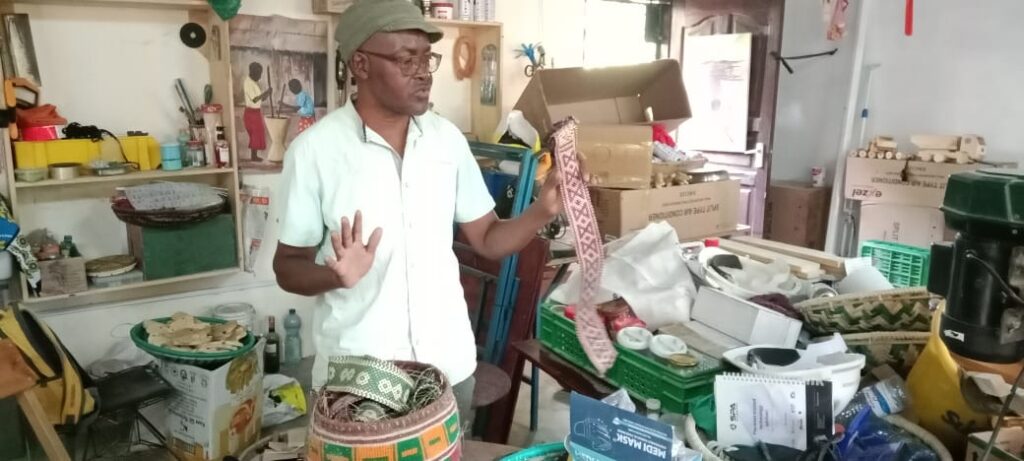
Designer Julius Musyoka of Common Interest, demonstrating how he prepares his community art/Photo by Mazera Ndurya
“We had to go to Wenje and Vukoni in Tana River County where weaving is the economic mainstay for women and bought their handcrafts that included baskets and mats. The aim was to have samples of the real artwork for further development of design motifs.
“We then focused on Giriama arts, their cultural handcrafts. We also picked what women do and settled on paintings of women fetching water among other chores such as grinding grains and food preparations. We got a painter to do the drawings,” he added.
In terms of designs, he said, they are more aware of what the market needs and more focused on the future products noting that one of the focus in the blue economy is aquatic products.
Going beyond the ordinary depending on what is in the market but there will also be ordinary products for home use such as wooden spoons.
Go Blue
“When it comes to environmental issues we use recycled timber or wood and when it comes to cultural materials that is made in the village, we use it sparingly or use an alternative.
“We are also creating more work for the rural women and connecting them to the conventional markets and that’s a good social development.”
The 14 month Go Blue Tourism and Cultural Heritage Component Action was funded by Camões, I.P., the Portuguese Development Corporation, in collaboration with the Jumuiya ya Kaunti za Pwani (JKP) Economic Development Secretariat, a partnership between the European Union (EU) and the Kenyan government to advance the Blue Economy Agenda through Coastal Development.
He said they were to develop 20 products but they achieved more even in terms of reach because art and craft knows no borders. The project engaged three people and three volunteers but would get an allowance during exhibitions. Musyoka said they were able to directly and indirectly benefit 52 people.
Musyoka said there is a lot of potential to be tapped and called on the Jumuiya ya Kaunti za Pwani (JKP) when doing their evaluation to call on the Tourism Development Fund to fund such initiatives that are tourism products.
“When I got the opportunity to work with other artisans including people living with disability we developed a generic fish, one that people can identify with, but of course we need to do other species that are common like dolphins, sharks and if possible octopus.
“Every community has its socio-economic activity and in Kenya for instance, those that are known carvers are from the Kamba community and at the same time we don’t have a history of carving from the coast. Carving is derived from what one is socialized to do,” he explained.
Members of the Millennium Handcraft Cooperative in Diani, Kwale County can now work with ease from a spacious and conducive environment, thanks to funding from the Go Blue project.
With a grant of Ksh334,000 from Camões, I.P., the Portuguese Development Corporation, in collaboration with the Jumuiya ya Kaunti za Pwani (JKP) Economic Development Secretariat, they have been able to expand the showroom to accommodate more carvings.
Carvings
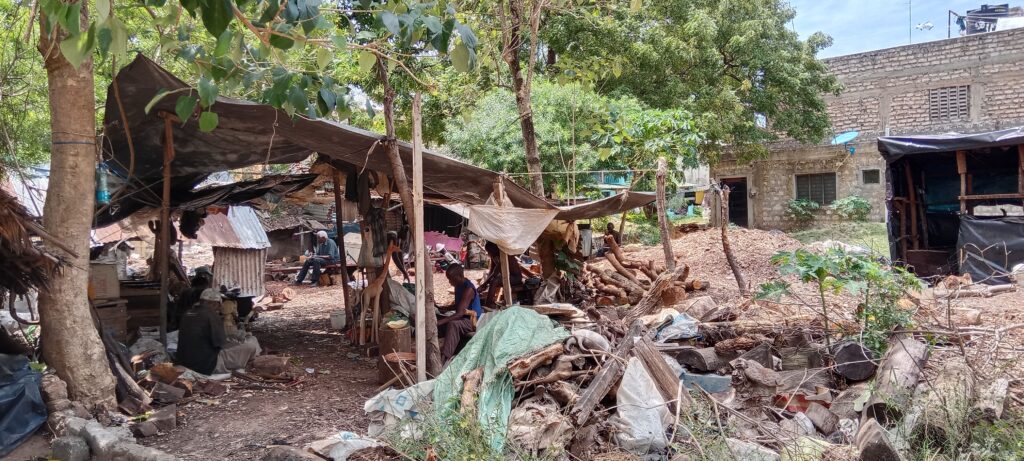
The makeshift tent where the carvers used to work from before buying a new, modern tent with grants from Camões. Photo by Mazera Ndurya
Gideon Mutua, Vice chairman Millennium Handcrafts Cooperative said inadequate space for their products was a big challenge as their clients did not have ample space to move around the shop to sample the crafts.
“The Go Blue team came here in 2023 as they were looking for groups to support. After going through the application process we were granted funds and I can say it has been of great benefit to us.
“Previously, we had a small area that we used as a showroom and offices but with the funds we were able to extend it to a much spacious area. Apart from that we also acquired a big tent where our sculptors work from, taking shelter from the sun and rain,” he said.
He said they would appreciate an extension of the project to enable them expand the facility, put signage and start a serious online marketing for the products.
Mutua said it has not been easy navigating the tough business environment but the cooperative has been very helpful in providing financial support to its members.
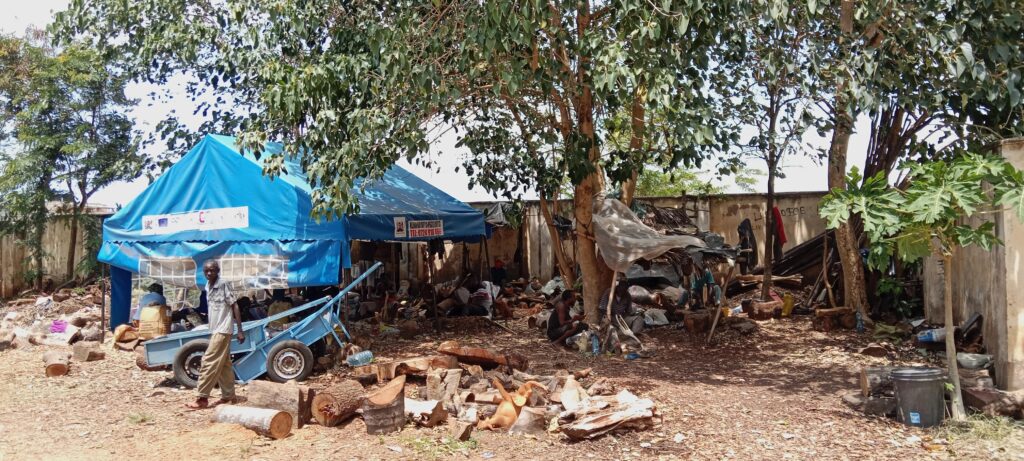
The new tent bought with funds from Camões at the Millennium Handcraft Cooperative in Diani where carvers now operate from/Photo by Mazera Ndurya
Although they are traditionally carvers of wild animals that are synonymous with the Kenya’s wildlife found in the national parks and reserves, they are saying it is good to diversify to meet the taste and needs of diverse clients.
“At first we were merely concentrating on traditional artefacts such as drums, bows and arrows, traditional walking sticks and clubs, of course the carvings of the animals are our main products here.
“I recently went to a seminar at a hotel here in Diani and I remember one of the artists making a lot of money from carving of a fish while those of us who took other animals did not sell anything,” he said.
Mutua’s statement comes at a time when marine scientists have raised concerns about the scarcity of carvings representing marine species, despite the coastal region’s major resource being the ocean.
Speaking recently at an Ocean Literacy Training Workshop in Mombasa which brought together scientists and artists, KMFRI Principal Research Scientist, Dr. Jacqueline Uku, noted that while many marine species could be depicted artistically and sold, this practice is less common compared to terrestrial animals. She emphasized the importance of involving artists in these efforts to create more artwork that educates the public about the ocean.
The sculptors face some challenges too and one of them is that they must go to the rural areas to source for materials and that means incurring the cost of transporting it to their site.
“The business is dependent of tourism therefore when the season is low the sales also go down.
“The trees are from the forest and sometime forest officers come here and cart away the material brought from the forest and there is nothing we can do about it,” he said.
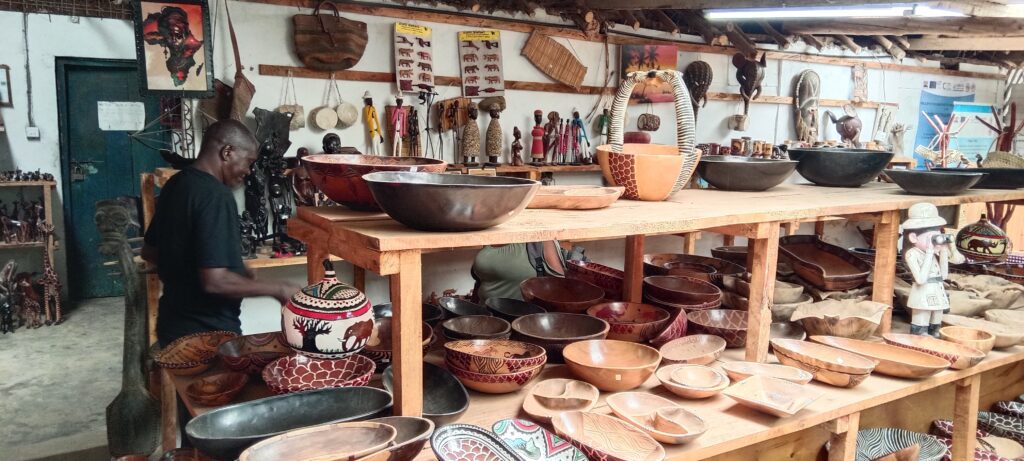
George Mutua showing some of the carvings being displayed in the expanded showroom courtesy of the Go Blue project/ Photo by Mazera Ndurya
However, the members are grateful to the project because through the funding they are finalizing their website which will come in handy in the marketing of their products.
Jumuiya ya Kaunti za Pwani
On the achievements of the Go Blue project, Nick Angore, Tourism, Culture and Heritage Sector Lead for Jumuiya ya Kaunti za Pwani (JKP) said the first major one made since the launch of the Jumuiya Tourism and Cultural Blueprint, 2030 in 2023 was the adoption of the interventions to be included in the long term plans of the respective counties.
“The other achievement is that there is growing awareness of the importance of the county governments to collaborate with national government in the promotion of the coast region as a tourist destination. Not just looking at the traditional attractions described as beach and sand and a little bit of wildlife but also the inclusion of culture and heritage,” Angore said.
He said international trends at the moment, according to a survey carried out some years ago, about 51 percent indicated that their reason for travel would be for the purpose of immersing themselves in the cultures of the places that they will visit.
